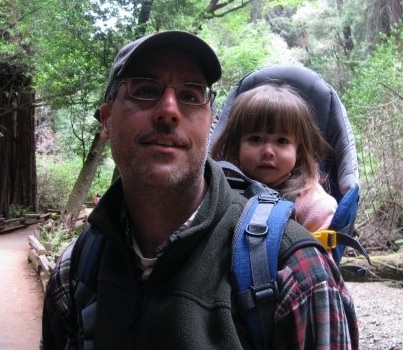What does a planning process look like from a developer's perspective? How do environmental activists sometimes undermine sustainable planning? What are the issues faced by planners who are trying to build more sustainable, shareable suburbs, in a conservative climate? How can we build bridges between the people battling over planning issues? These are just some of the questions South Florida planner Dan DeLisi tackles in a two-part series, called "The Suburban Environmentalist," about how typical residents, environmental advocates, and even professional planners can work with developers, businesses, and each other to produce better environmental outcomes. To get started, read his first entry, "Can We Negotiate a Better Suburbia?"
I moved to Southwest Florida right out of graduate school, a freshly minted urban planner and political liberal looking to make my imprint on society. I had dreams of leading the fight against over-development and I was excited to get started. I got a job at a small consulting firm and the first project my boss Hutch Johnson (not his real name) assigned to me was the Estero Community Plan, a grassroots, consensus-based planning effort that the firm was hired to facilitate. My perfect job did exist, I decided, and I was in it.
By the second week the façade of perfection started melting away. Hutch was in a crunch working for a large regional mall developer who was in the final weeks of their approval process. As part of their development permits, local county planners were proposing a “donation” of over $1 million to offset impact to the availability of affordable housing in the area, and the developer was fighting it. The developer didn’t understand the issue, how the monetary figure was derived and why it was being asked for. After all this development was the first that was required to make this type of contribution.
I was asked to study the issue and create an argument against the affordable housing payment. I was shocked, nearly speechless. When Hutch asked this of me the only words that I could muster were, “You mean to tell me that while all of my other MIT classmates are working to protect and provide affordable housing throughout the country and helping society, you want me to help some mega-developer avoid providing it?” He was shocked. I said “no.”
I should have known, I thought, as I walked back to my cubicle from his office. After all, when I first arrived I asked him jokingly how much he liked having a Bush brother for a Governor. Coming from Massachusetts I could not fathom anyone liking the idea of a Bush as a Governor, especially not an urban planner. To my surprise he told me he loved Jeb Bush! I had found myself working for a Bush loving, ultra-conservative Republican Planner. In my wildest dreams, I had never considered that a person existed with those seemingly conflicting traits. Clearly he had no intention of looking out for the public interest, I thought, but his only goal was to make money for himself and his clients.
 Credit: Charles Tilford
Credit: Charles Tilford
I didn’t know how long I wanted to stay in this job. I knew my days were numbered. After some long soul searching that night I resolved that I would stay long enough to learn from the enemy. I did learn… but I also changed.
First, I needed short-term solutions to the challenges I faced; for the affordable housing proposal I came up with an alternative way of looking at the issue. The developer was working with the local university anyway and providing a donation. I researched the local affordable housing issue and exaction methodology for them, and then recommended earmarking their donation for student housing to prevent students from depleting the local affordable housing stock, a situation that Bostonians are all too familiar with. The developer didn’t take my advice… but my employer at least thought the approach was creative. Mission accomplished, job saved.
After that episode, however, I started degenerating into a Stepford employee. I knew that I was working for people who didn’t care–and as long as I was there, I decided, I too couldn’t care.
A couple months later, I was working on a plan for a residential community with a small wetland area in the southeast corner of the property. Knowing I was surrounded by people I thought of as uncaring greedy Republicans, I took the plan to Hutch, pointing out the wetland and asked if he wanted me to destroy it. His facial response echoed the one I saw when I told him that I would not work on fighting against an affordable housing exaction two months before.
“Why would we want to destroy that wetland?” he asked.
“To build more units?” I sheepishly responded.
He looked at me funny and then told me that we are getting the units that we want. Our job, he said, is to respect environmental features, preserve the environment, and demonstrate to our clients how natural areas can add value to their communities. Hutch was shocked by the callousness I had thought he wanted to see; I was shocked by the existence of a conservative Republican urban planner who didn't want to destroy wetlands just on principle.
Over the course of the next several months I started to openly engage in debate with him. If I wasn’t going to stay here long, I thought, I may as well take this as an opportunity to understand what made this oddity tick.
As it turned out, there are really three driving principles that Hutch lived by in planning: personal ethics, fairness, and a greater public benefit. The last point seemed in conflict with the affordable housing incident, but as I later learned, fairness with the application of regulations is the only way to avoid the unintended consequences of those regulations, a topic I will delve into in more detail later.
 Credit: Caleb
Credit: Caleb
Hutch left the company a few months later and I was off running with the Estero Community Plan. The plan was written largely by him, to raise the bar for development in the area. It pushed the envelope as a vision for the community, creating mixed-use areas and greater environmental preservation standards, while moving toward the creation of a sense of place in an area dominated by gated communities and strip malls.
Just prior to the first public hearing before the Local Planning Agency for our proposed plan, I gathered the Planning Panel, the organization that was set up as representatives of the local civic groups and the business/development community. As Hutch had gleefully informed me in one of our open discussions, every one of them was a conservative Republican, both the pro and anti-development sides.
We had a staff report from the county that was recommending against several of our policies for the community. One of those required that all new development proposals make a presentation to the community for input prior to approval, an idea that was akin to heresy in this area. Another objection was on the “discouraging” of more than one acre for outdoor display area for any use — a design standard intended to eliminate car dealerships and most big box developments, or at least clean up the parking lots. The day before our meeting I received a call from a prominent land use attorney in town vowing to fight us on these crazy ideas.
I expressed my concern to the Panel. We were up against county planning staff, who were nervous about too much public involvement, as well as local land-use attorneys who didn’t want more restrictions. Immediately, David Graham, the Vice President of Planning for The Bonita Bay Group, a developer of large master planned communities in Florida, spoke up. “I will take care of this. And we should strengthen that outdoor display regulation because that use is simply not appropriate.”
The interesting thing about consensus is that when all parties understand what they gain in the process, they end up doing strange things that would otherwise seem to be against their best interest. We testified before the Planning Agency for three hours, arguing that community involvement enhances the process. The most convincing argument came from David, one of the most influential leaders in the development community. He presented on the entire plan, the consensus process, and why the entire package must be adopted, including all of the community involvement aspects. Without his passionate support, and the ability to bring along the development community, we would have accomplished nothing.
Since that time, several other grassroots based planning efforts have tried to emulate the Estero planning process, without the consensus aspect and with a clear anti-development posture, if not outright disdain for any member of the development community. These plans have accomplished little to nothing, both because the difficulty during the adoption process and the dearth of ideas that comes with a lack of understanding of the development process and how development can for to provide benefits for communities, rather than simply detract from communities.
Over the last decade of working with local governments, land developers, environmental organizations and civic groups, I have learned that the enemy is not confined to one group only. The "enemy" is everywhere. Opposition to environmentally sustainable communities can come from the development community, to be sure, but it is often also found in unbending government regulations that promote suburban sprawl. Trouble can also come from environmental organizations who have written off the development community as simply bad, even when development brings solutions like the financial basis for much needed environmental restoration projects or the density necessary for successful public transit. The enemy, in fact, is anyone who can’t engage in meaningful debate in order to find the right or best environmental outcome. The best I can do, I've found, is to try to avoid becoming that enemy.









